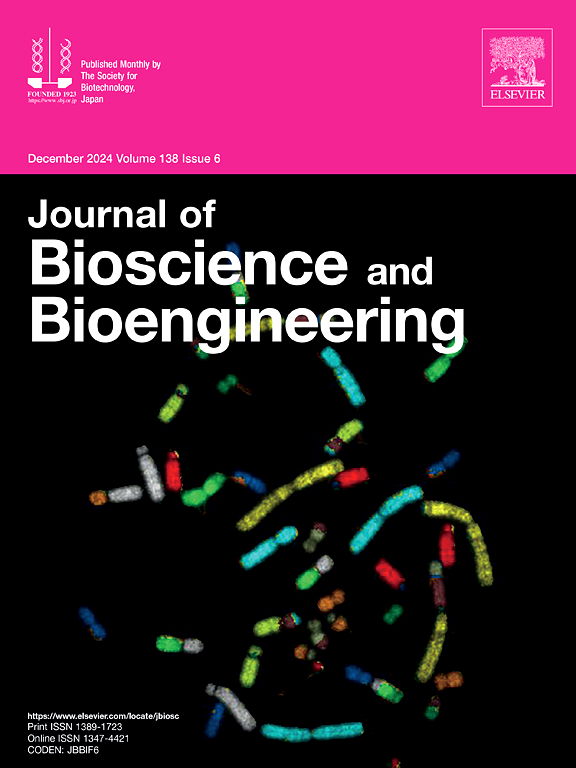Identification of toluene degradation genes in Acinetobacter sp. Tol 5
IF 2.9
4区 生物学
Q3 BIOTECHNOLOGY & APPLIED MICROBIOLOGY
引用次数: 0
Abstract
Microbial degradation of aromatic compounds provides sustainable solutions for environmental remediation and bioconversion. Acinetobacter sp. Tol 5 is notable for its strong adhesiveness and potential as a biocatalyst for toluene degradation; however, its toluene metabolic pathway has not been fully elucidated. In this study, genomic analysis identified a cluster of genes in Tol 5 highly similar to the well-known tod operon of Pseudomonas putida, encoding enzymes responsible for toluene metabolism. Phylogenetic analyses indicated that these tod genes, unusual among Acinetobacter species, were likely acquired through horizontal gene transfer. Transcriptomic analyses revealed that todF and todC1 are co-transcribed, while the adjacent fadL2 gene, encoding a putative outer membrane transporter corresponding to P. putida todX, is independently transcribed. Growth experiments using gene-knockout mutants revealed that TodC1, the large subunit of dioxygenase, is essential for growth on toluene, whereas FadL2 is not essential. Growth curves on each carbon source further showed that the todC1 knockout mutant could metabolize benzoate, but not toluene or benzene, confirming that the TOD pathway is the primary route for toluene and benzene degradation in Tol 5. The identification of the functional TOD pathway, which is unique within Acinetobacter, provides genetic and biochemical insights for the development of Tol 5 as an efficient immobilized biocatalyst for the bioremediation and bioconversion of aromatic compounds.
不动杆菌Tol 5中甲苯降解基因的鉴定。
芳香族化合物的微生物降解为环境修复和生物转化提供了可持续的解决方案。不动杆菌sp. Tol 5因其强大的粘附性和作为甲苯降解生物催化剂的潜力而闻名;然而,其甲苯代谢途径尚未完全阐明。在本研究中,基因组分析发现Tol 5中的一组基因与众所周知的恶臭假单胞菌tod操纵子高度相似,编码负责甲苯代谢的酶。系统发育分析表明,这些在不动杆菌物种中不常见的tod基因可能是通过水平基因转移获得的。转录组学分析显示todF和todC1是共转录的,而相邻的fadL2基因是独立转录的,fadL2基因编码一种推定的外膜转运蛋白,对应于恶臭假单胞菌todX。基因敲除突变体的生长实验表明,双加氧酶的大亚基TodC1是在甲苯上生长所必需的,而FadL2不是必需的。各碳源上的生长曲线进一步表明,todC1敲除突变体可以代谢苯甲酸酯,但不能代谢甲苯和苯,证实TOD途径是Tol 5中降解甲苯和苯的主要途径。TOD途径在不动杆菌中具有独特的功能,为Tol 5作为芳香族化合物生物修复和生物转化的高效固定化生物催化剂的开发提供了遗传学和生物化学方面的见解。
本文章由计算机程序翻译,如有差异,请以英文原文为准。
求助全文
约1分钟内获得全文
求助全文
来源期刊

Journal of bioscience and bioengineering
生物-生物工程与应用微生物
CiteScore
5.90
自引率
3.60%
发文量
144
审稿时长
51 days
期刊介绍:
The Journal of Bioscience and Bioengineering is a research journal publishing original full-length research papers, reviews, and Letters to the Editor. The Journal is devoted to the advancement and dissemination of knowledge concerning fermentation technology, biochemical engineering, food technology and microbiology.
 求助内容:
求助内容: 应助结果提醒方式:
应助结果提醒方式:


